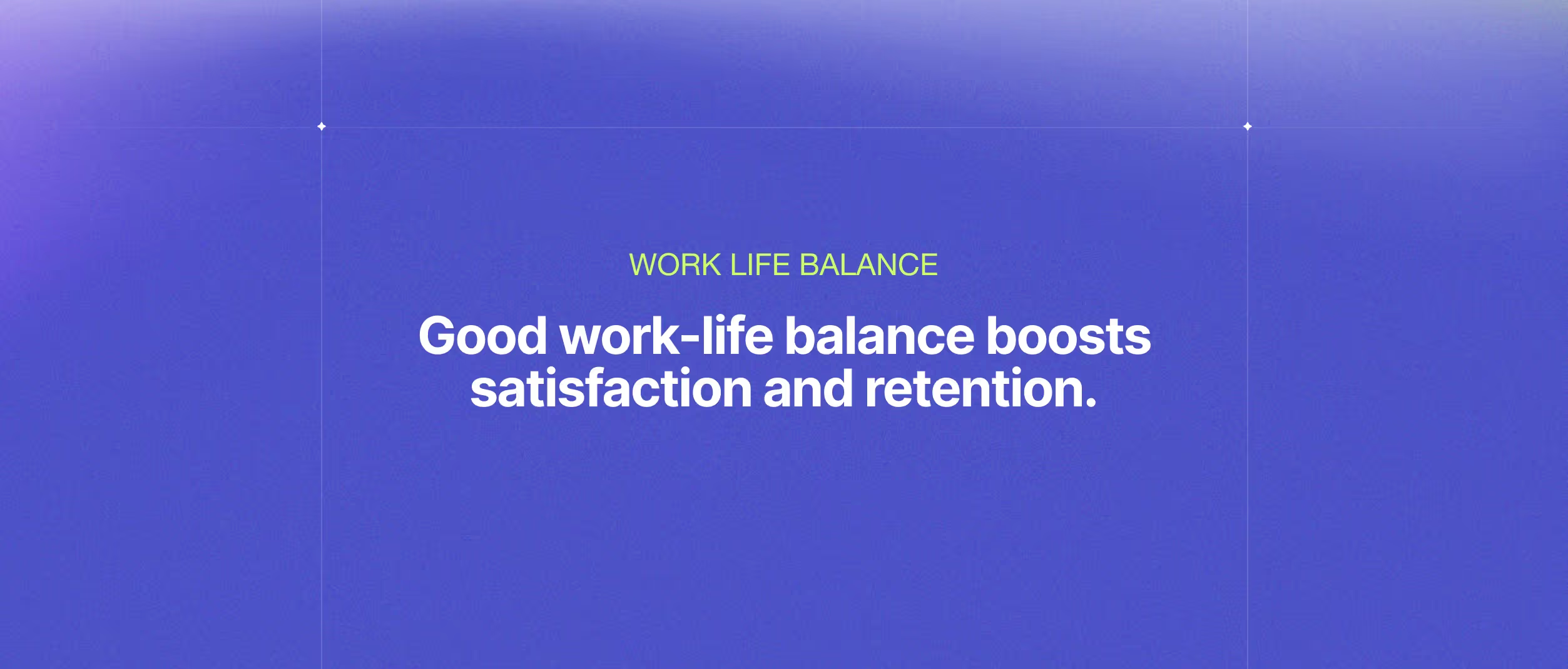In today's relentlessly competitive tech landscape, finding the right software developers to fuel your company's growth feels like an endless uphill battle. The fierce competition for top talent in the US, coupled with the astronomical cost of living and salaries in major tech hubs, creates a significant bottleneck for many companies. According to a recent report by Glassdoor , the average salary for a senior software engineer in the San Francisco Bay Area exceeds $170,000 annually. This translates to hefty development budgets and an ongoing struggle to find engineers with the specialized skills you need to execute your most ambitious projects.
The consequences of this talent scarcity are significant. Projects languish in development limbo as your team scrambles to find engineers, deadlines slip past, and your in-house developers face the risk of burnout as they try to keep pace with an ever-growing workload. Innovation suffers, and the pressure to deliver top-notch software solutions remains relentless.
But what if there was a way to tap into a vast and dynamic talent pool of highly skilled software engineers, access in-demand niche skill sets, achieve significant cost savings, and work with developers within similar time zones – all without sacrificing an ounce of quality? That's where the burgeoning tech scene of Latin America offers a compelling solution.
This blog post will help you unlock the potential of scaling your team with Latin American developers, address common concerns, and provide you with a proven roadmap for successfully integrating remote talent into your team and achieving your growth goals.
Why hiring in Latin America? The Benefits Breakdown
Cost Savings
One of the most significant draws of hiring talent in Latin America is the potential for substantial cost savings. Developers with comparable skills and experience often command salaries that are significantly lower compared to their US counterparts. For example, the average annual salary for a senior software engineer in the US is more than double the salary of a senior software engineer with similar experience in Colombia. This disparity can translate into real and significant cost savings for your company.
It's important to note that the exact savings will vary depending on several factors, including:
- Developer Location: Salaries can differ within Latin America, with major cities typically commanding slightly higher salaries compared to smaller towns.
- Developer Experience Level: Senior developers with specialized skills will naturally command higher salaries than junior developers, regardless of location.
- Industry Specialization: Certain in-demand niches, like machine learning or blockchain development, may see higher salaries across the board.
Despite these variables, the potential for cost savings when hiring skilled software developers in Latin America remains significant. By carefully considering your needs and leveraging a reputable staff augmentation partner, you can tap into this talented workforce and achieve a significant return on your investment.
Vast and Growing Talent Pool
Latin America's tech sector is experiencing explosive growth, transforming the region into a global hub for skilled software engineers. Universities across the region are graduating a steady stream of highly qualified professionals, many with a strong emphasis on computer science and engineering programs. These graduates are not only proficient in their technical skills, but a significant portion are fluent in English, making communication and collaboration seamless. According to the EF English Proficiency 2023 report, which analyzes the English proficiency level of 113 countries worldwide, Argentina (#28), Honduras (#31), Costa Rica (#38), Cuba (#43), Uruguay (#39), Bolivia (#41), Paraguay (#45), Peru (#51), and Chile (#52) stand out among the top-performing nations. Argentina, in particular, ranks among the countries with high proficiency.
This emphasis on English language skills, coupled with a growing desire for remote work opportunities, makes Latin American developers a perfect match for international companies seeking to scale their teams. No matter your specific needs, you'll find a deep talent pool to tap into. Whether your project demands seasoned veterans proficient in back-end development with Python, cutting-edge data scientists adept at leveraging the latest machine learning algorithms, meticulous Quality Assurance specialists ensuring seamless functionality, innovative Frontend developers crafting intuitive user experiences, or any other software professionals, Latin America stands as a rich resource of diverse talent ready to meet your needs.
The region also boasts a thriving mobile development scene, with many developers possessing extensive experience in popular frameworks like React Native. This makes it ideal for companies seeking to develop and launch high-quality mobile applications for a global audience.
And LatAm represents not only quality but also quantity. In terms of hiring potential, according to Statista, there is a pool of almost 840,000 software developers just between Brazil, Mexico, and Argentina, three of the most populous countries in the region. Now, imagine having access to the entire talent pool of Latin America.
Time Zone Alignment
Most countries in Latin America fall within similar or overlapping time zones as major US cities. This translates to significant benefits for collaboration and communication. Gone are the days of scheduling meetings at inconvenient hours or waiting for overnight responses to urgent questions. With Latin American developers, real-time collaboration becomes a reality. US-based project managers can easily set up daily standup meetings or code review sessions with their remote team members without requiring anyone to work outside of standard business hours. This fosters a more cohesive and efficient workflow, as teams can readily share updates, troubleshoot issues, and make decisions collectively in real-time.
Here's a breakdown of the advantages of similar time zones:
- Reduced Communication Delays: No more waiting for emails or messages sent after hours to be addressed the next business day. With overlapping time zones, you can expect a quicker response time and a more continuous flow of communication.
- Improved Collaboration: Real-time interaction allows for brainstorming sessions, problem-solving discussions, and ad-hoc meetings to occur seamlessly. This fosters a more collaborative environment and can lead to better decision-making.
- Enhanced Team Building: The ability to interact more naturally, without the barrier of a large time zone difference, can help build stronger relationships and a more cohesive team dynamic.
- Reduced Risk of Errors: The ability to clarify questions or misunderstandings in real-time can help minimize errors and ensure everyone is on the same page throughout the development process.
It's important to note that there will still be some time zone variations across Latin America. For instance, some South American countries may be one hour ahead of Eastern Standard Time (EST) in the US. However, compared to offshore development, outsourcing to regions with a 12-hour time difference, these variations are much smaller and more manageable.
By leveraging the time zone advantages, companies can unlock a new level of efficiency and collaboration when working with Latin American developers.
Cultural Compatibility
While it's important to be mindful of cultural differences and adapt your management styles accordingly, many Latin American cultures share core similarities with the US in terms of work ethic, business practices, and a focus on achieving results. This underlying compatibility can significantly ease the process of integrating remote developers into your existing team structure.
Unlike Europe or Asia, the vast majority of countries in the region share the same language, which facilitates the assembly of distributed teams and the adaptation of each new developer to their environment. Of course, there will always be individual differences and company-specific cultural nuances. Here are some ways to foster an even smoother integration:
- Cultural Sensitivity Training: For your existing team, offer resources or short workshops on cultural awareness and best practices for working effectively with colleagues from Latin America.
- Emphasize Communication: Encourage open communication, regular check-ins, and create spaces for team members to get to know each other on both a professional and personal level.
- Celebrate Diversity: Highlight the unique perspectives and backgrounds that your new team members bring to the table and view these differences as sources of innovation.
By acknowledging potential areas of cultural differences, while simultaneously focusing on the common ground, you can cultivate a truly inclusive and high-functioning remote development team.
Overcoming Challenges and Dispelling Myths
Communication Concerns
It's understandable to have some apprehension about potential language barriers or differences in communication styles. However, a reputable staff augmentation partner will carefully vet candidates for both technical skills and their English language fluency. Additionally, investing in reliable communication tools (like Slack, Zoom, etc.), encouraging regular check-ins, and setting clear communication protocols can bridge any potential gaps.
Legal and HR Complexities
Navigating the intricacies of payroll, benefits, tax laws, and labor regulations across borders can be a major headache. This is a key area where a partner like Devlane shines. We take on all the administrative and legal complexities of remote hiring in Latin America, ensuring full compliance on your behalf and a hassle-free experience.
Managing Remote Teams
While managing remote teams requires some adaptation, it's certainly possible to foster a highly productive and collaborative environment. The key lies in adopting proven strategies, clear communication, trust-building, and leveraging the right tools. Regular check-ins, transparent communication, project management platforms designed for remote work, and a focus on results over hours logged ensure that distributed team members feel connected, productive, and aligned with your company's objectives.
To free you from those burdens, at Devlane we've created the role of the Team Engagement Advisor, your strategic ally to unlock your team's full potential, keep them united and motivated, and ensure that your objectives are met.
How to Hire LatAm Developers: Step by Step
Hiring developers in Latin America (LatAm) can be a strategic move for companies looking to leverage the region’s skilled talent pool, cost-effectiveness, and cultural alignment. This step-by-step guide will walk you through the process of hiring LatAm developers, ensuring that you find the right fit for your project and company.
Define Your Requirements
Start by clearly outlining the skills, experience, and qualifications you need. This includes the specific technologies, project scope, and any soft skills necessary to ensure the developer aligns with your team’s goals.
Research and Outreach
Conduct thorough research to identify reputable sources for LatAm talent, such as specialized job boards, staffing agencies, or professional networks. Begin outreach efforts to attract qualified candidates.
Screening and Shortlisting
Review resumes and portfolios to screen candidates based on your predefined criteria. Create a shortlist of the most promising candidates for further evaluation.
Technical Assessments
Administer technical tests or coding challenges to assess the candidates’ expertise in the required technologies. This step ensures that they have the technical skills needed to excel in the role.
Interviews
Conduct interviews to evaluate both technical knowledge and communication skills. Use this opportunity to discuss the candidate's experience, approach to problem-solving, and how they would handle project-specific challenges.
Cultural Fit Evaluation
Assess whether the candidate’s values, work ethic, and communication style align with your company’s culture. A good cultural fit is essential for long-term collaboration and team harmony.
Reference Checks
Contact previous employers or colleagues to verify the candidate’s work history, reliability, and performance. Reference checks provide valuable insights that may not be evident during interviews.
Offer Negotiation
Once you’ve selected your ideal candidate, negotiate a fair and competitive offer. Consider local market rates, benefits, and any additional perks that can make your offer attractive.
Onboarding and Integration
Develop a structured onboarding process to help the new developer integrate smoothly into your team. Provide the necessary tools, resources, and support to ensure a successful start.
Ongoing Support and Development
After hiring, continue to offer support and opportunities for professional development. Regular check-ins, feedback, and training can help retain top talent and ensure they remain engaged and productive.
Would you like to know how to choose the right Nearshore Software Development partner and the best practices for starting your Team Extension?
Other Blog Posts

What 2025 meant for Devlane: A year of growth and innovation




.webp)



